Come Thursday, thousands of men will march down the streets of the Crown Heights neighborhood of Brooklyn, N.Y., joyously parading the Seventh Unity Torah Scroll that belongs, literally, to hundreds of thousands of Jewish people all over the globe.
Yet few will know that the celebration is due to Yisrael Gottleib, a quadriplegic who lived in the quiet Haifa suburb of Kiryat Yam decades ago.
Rendered immobile by a traffic accident, the Russian immigrant to Israel lived on the margins of society. He was, however, regularly visited by Rabbi Moshe Shmuel Oirechman of Chabad of the Krayot, the cluster of towns north of Haifa. The two men would study Torah and talk. Over time, Gottlieb—a descendant of the legendary Chassidic rebbe, Rabbi Levi Yitzchak of Berditchev—took a growing interest in Judaism, learning, praying in tefillin and observing Torah to the best of his ability.
“Some days before Rosh Hashanah 5742 [1981], I told Yisrael that I was planning on visiting the Rebbe [Rabbi Menachem M. Schneerson, of righteous memory] for the month of Tishrei,” recalls Oirechman. “He asked if I could take a letter for him to the Rebbe. He began dictating to me. In his letter, he asked the Rebbe to initiate a campaign—similar to the Children’s Sefer Torah—for all Jewish people, including those who had lost their lives in the Holocaust.
“I told him that I could not tell the Rebbe what to do, but he insisted, saying that I was his hands, and that he had no other way of communicating since he was unable to write on his own. I ended up writing the letter and delivering it to the Rebbe’s office.”
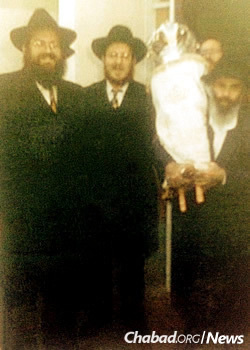
A reply came quickly, with the Rebbe reacting enthusiastically. Speaking on the evening before Rosh Hashanah, the Rebbe declared that it had been suggested that a Torah be written to unify all of Israel, in which every Jew would be allowed to purchase a letter, and that it should be done as soon as possible.
Noting that Jews are inherently different—each individual having a specific mission in life—the Rebbe said that the one way to unite them is through the singular and eternally true Torah, shared equally by all Jews.
Unlike the children’s Torah, where each letter cost $1, the Rebbe specified that there should be no set price per letter in the Sefer Torah Hakloli—the “General Torah Scroll,” as this one was known. In addition, as Gottlieb had requested, letters could be purchased for both the living and those who had passed on.
Within days, a group of Haifa-area Chabad activists formed a committee to commission a new Torah and keep track of letter sales. They traveled post-haste to Jerusalem to begin the writing of the new scroll with Rabbi Shlomo Aharon Henig, the venerated scribe who had been appointed to write the children’s Torah.
Simultaneously, several other groups in Israel began writing Torahs; however, the Rebbe specified that no more be written since the purpose was to unite and not divide.

First Scroll Taken Outside Israel
Some six months later, after Passover, the scroll commissioned by the Haifa group had been completed, and 304,805 individuals had stepped forward to purchase letters.
“We asked the Rebbe where we should hold the celebration. Among the places we were considering was Meron, where tens of thousands of people would soon be gathering to celebrate 33 Omer, the passing of Rabbi Shimon bar Yochai, who is buried there,” explains Oirechman. “The Rebbe replied that we should conclude the Torah in the place where there’d be the largest crowd to honor the event, and we determined to hold the completion in Meron on Lag BaOmer.”
Oirechman then asked the Rebbe if the group should continue to commission another scroll. The Rebbe replied that they should—on the condition that another and yet another would be written “as long as there is a single Jew needing to purchase a letter.”
And so, scroll followed scroll, each one going to another Israeli community.
Some 24 years later, the seventh scroll is about to be completed. It was decided that it be placed in the synagogue adjacent to the Ohel, the resting place of the Rebbe in Queens, N.Y. It will be the first scroll to be taken outside of the Holy Land.
Keeping with the Rebbe’s instruction that the completion be celebrated amid the largest possible crowd, the final letters will be penned on Thursday, Nov. 5, during the International Conference of Chabad-Lubavitch Emissaries (Kinus Hashluchim) and in the cavernous armory in Brooklyn that will house much of the conference this year.
After the final letters are inked in, the first letters of Genesis will be inscribed in the Eighth Unity Torah Scroll. The freshly completed scroll will then be taken to the Rebbe’s office in Lubavitch World Headquarters at 770 Eastern Parkway for traditional joyous dancing (hakafot). The following morning, it will be taken to its home in Queens.
All from a man with broken Hebrew who had an idea ...


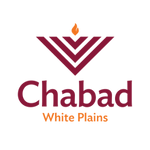
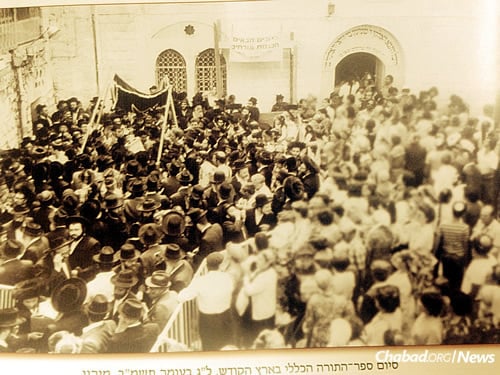
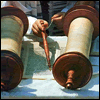
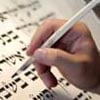

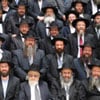
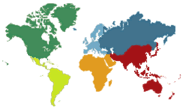

Start a Discussion